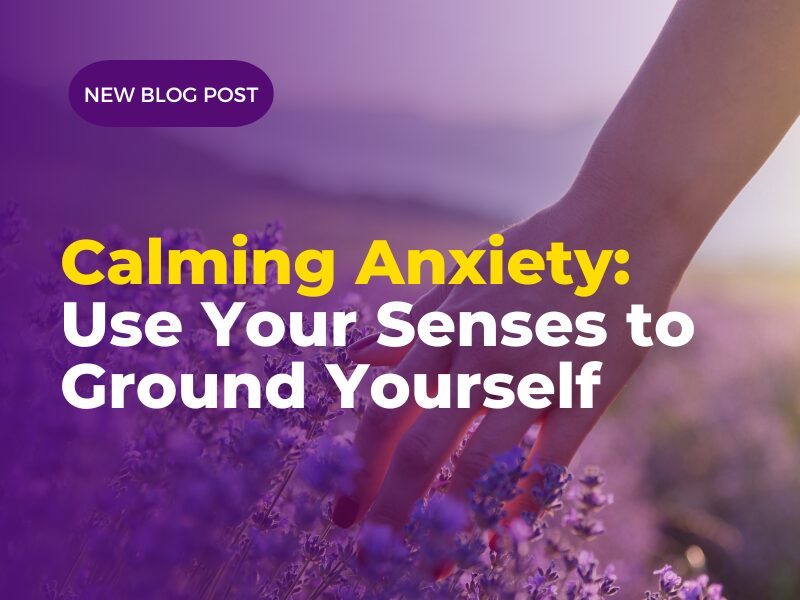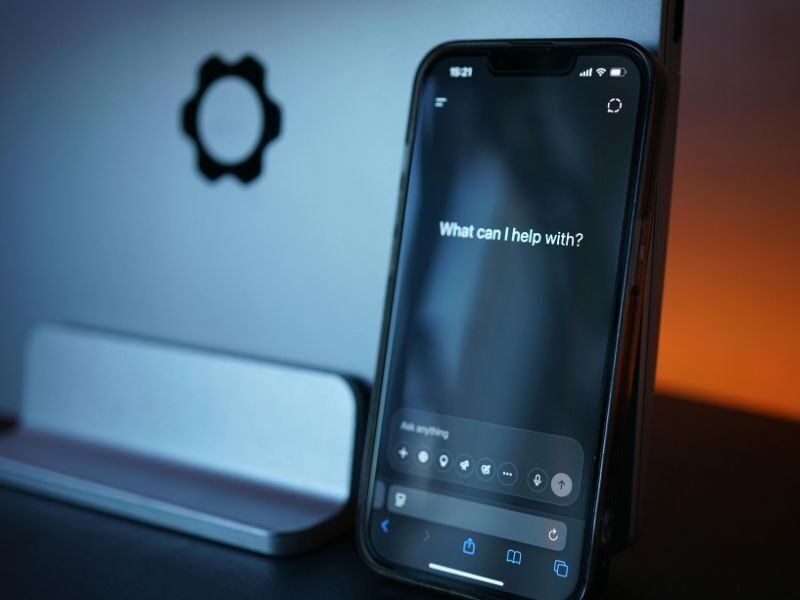Calming Anxiety: Use Your Senses to Ground Yourself

Feeling worried, tense, or nervous are all signs of anxiety, which is a common mental health concern for children and youth. According to Anxiety Canada, more than 20% of children and teenagers are affected by anxiety throughout their lives. When we experience anxiety, it can be hard to concentrate as our minds are filled with thoughts of excessive worrying. The good news is there are practical strategies, such as grounding skills, that can help calm your mind.
Grounding skills help us move our attention away from our thoughts and focus on our physical body or the world around us. One helpful way to practice grounding skills is by using our five senses, so let’s take a look at a few different strategies.
Three ways you can use your senses to ground yourself!
1) Go Through the Five Senses to Calm Your Mind:
The five senses make up your sight, sound, smell, taste, and touch. To ground yourself (come back to the present moment), you can focus on each sense one by one. This activity is commonly known as the “5, 4, 3, 2, 1” exercise.
- 5 things you can see
- 4 things you can feel
- 3 things you can hear
- 2 things you can smell
- 1 thing you can taste
Begin by identifying five things you can see around you. Then identify four things you can feel. This can include emotions and physical sensations. Does your stomach hurt? Can you feel your hair on the back of your neck? Your clothes on your body? Are you cold or warm? Next, name three things you can hear, two things you can smell, and one thing you can taste.
This activity goes through each sense to tune you into what your body is experiencing in the present moment.
If you have difficulty identifying distinct smells or tastes, there is a positive twist you can put on this exercise. After you go through the five things you see, four things you feel, and three things you hear, name two things that make you happy and one thing that is great about you!
2) Explore Texture With Your Sense of Touch:
This activity can help you focus on your sense of touch and is a great immediate grounding skill. It's simple: pay attention to what you can feel and describe the object to yourself. For example, you can ask questions like, "What texture does this feel like?" or "How does this feel on my fingers?" You can use different objects from blankets or towels to countertops and rocks. Anything you can touch and describe will help you tune in to your sense of touch!
3) Focus on Temperature:
Another grounding skill that engages your sense of touch is focusing on temperature. One technique from Dialectical Behavioral Therapy (DBT) that can at times shock your system is to seek out different temperatures. For example, you can try taking a cold shower, holding ice cubes in your hands, or spending time outdoors and then moving to a different temperature indoors.
The important thing to keep in mind with this activity is to maintain manageable and reasonable safety limits. For example, it is okay to hold ice cubes for a minute or two but be sure to take a break! We don’t want to put ourselves or anyone else at risk while using this grounding skill.
Give these strategies a try to see which ones work for you. Remember, if intrusive thoughts come up, acknowledge them and then shift your focus back to the activity. For more grounding skills that you can try at home, you can download our printable resource here.
If you are under 18 and need further support with anxiety, call Front Door as a first step or visit our website.
Instagram Feed
"I feel so fortunate to have had the opportunity to learn and grow at the Waterloo Region Psychology Consortium. The range of experience across sites and never-ending support from my supervisors allowed me to meet every one of my training goals and provided me with professional opportunities that left me feeling prepared, confident, and excited about my future as a clinical psychologist."












